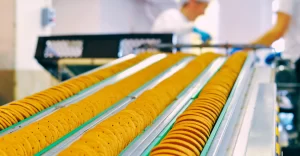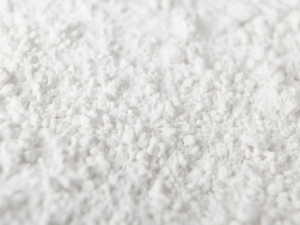Chemical Structure and Classification
CMC is a derivative of cellulose, the most abundant natural polymer derived from plant cell walls. Cellulose is a polysaccharide composed of glucose units linked by β(1→4) glycosidic bonds. In CMC, some hydroxyl groups (-OH) of the cellulose backbone are substituted with carboxymethyl groups (-CH2-COOH). This substitution transforms cellulose from a water-insoluble polymer to a water-soluble one, giving rise to CMC’s unique properties.
CMC is classified as a synthetic polymer, although it originates from a natural source. It’s specifically a cellulose ether, a category of compounds where alkyl or aryl groups are attached to cellulose. This modification alters the physical and chemical properties of the original cellulose, making CMC distinct in its behavior and applications.
Production Process
The production of CMC involves a series of chemical reactions. The process typically starts with purified cellulose, which is reacted with sodium hydroxide (NaOH) to form alkali cellulose. This is then treated with monochloroacetic acid, leading to the substitution of hydroxyl groups with carboxymethyl groups. The degree of substitution (DS) – the number of hydroxyl groups replaced per glucose unit – determines the solubility and other properties of the CMC produced. The process can be controlled to produce CMC with varying degrees of substitution, hence tailoring it for specific applications.
Properties
CMC’s unique properties stem from its structure. The presence of carboxymethyl groups imparts a high degree of hydrophilicity, making it water-soluble. This solubility, combined with its ability to form viscous solutions, is central to its applications. CMC solutions exhibit non-Newtonian behavior, meaning their viscosity changes under varying shear rates. It also has high chemical stability, resistance to microbial action, and non-toxicity, making it suitable for use in sensitive applications like food and pharmaceuticals.
Applications
CMC’s versatility is evident in its wide range of applications:
- Food Industry: As a thickener, stabilizer, and emulsifier, CMC is used in ice creams, baked goods, dressings, and dairy products. It prevents ice crystallization and improves mouthfeel and shelf-life.
- Pharmaceuticals and Cosmetics: In pharmaceuticals, it functions as a thickener, stabilizer, and excipient in tablets and oral suspensions. In cosmetics, it’s used in toothpaste, lotions, and shampoos for its viscosity and stabilizing properties.
- Paper and Textile Industries: It enhances the strength and flexibility of paper products and is used as a sizing agent in textiles.
- Oil and Gas Industry: In drilling fluids, CMC acts as a viscosity modifier and water retention agent, improving the efficiency of drilling operations.
- Personal Care: Due to its non-toxic and hypoallergenic nature, it’s used in various personal care products.
Environmental and Health Aspects
CMC is generally regarded as safe and environmentally benign. It’s non-toxic, biodegradable to an extent, and doesn’t accumulate in the environment. However, the production process involves chemicals that require careful handling and disposal.
Conclusion
Carboxymethyl Cellulose represents a versatile, synthetic polymer derived from natural cellulose. Its ability to be engineered for specific properties through the degree of substitution makes it a highly valuable material across numerous industries. Its water solubility, viscosity, and stability are the key attributes that define its applications, ranging from food to pharmaceuticals and beyond. Its synthesis from a natural source combined with its wide range of uses underscores the significance of CMC in modern industrial applications.





